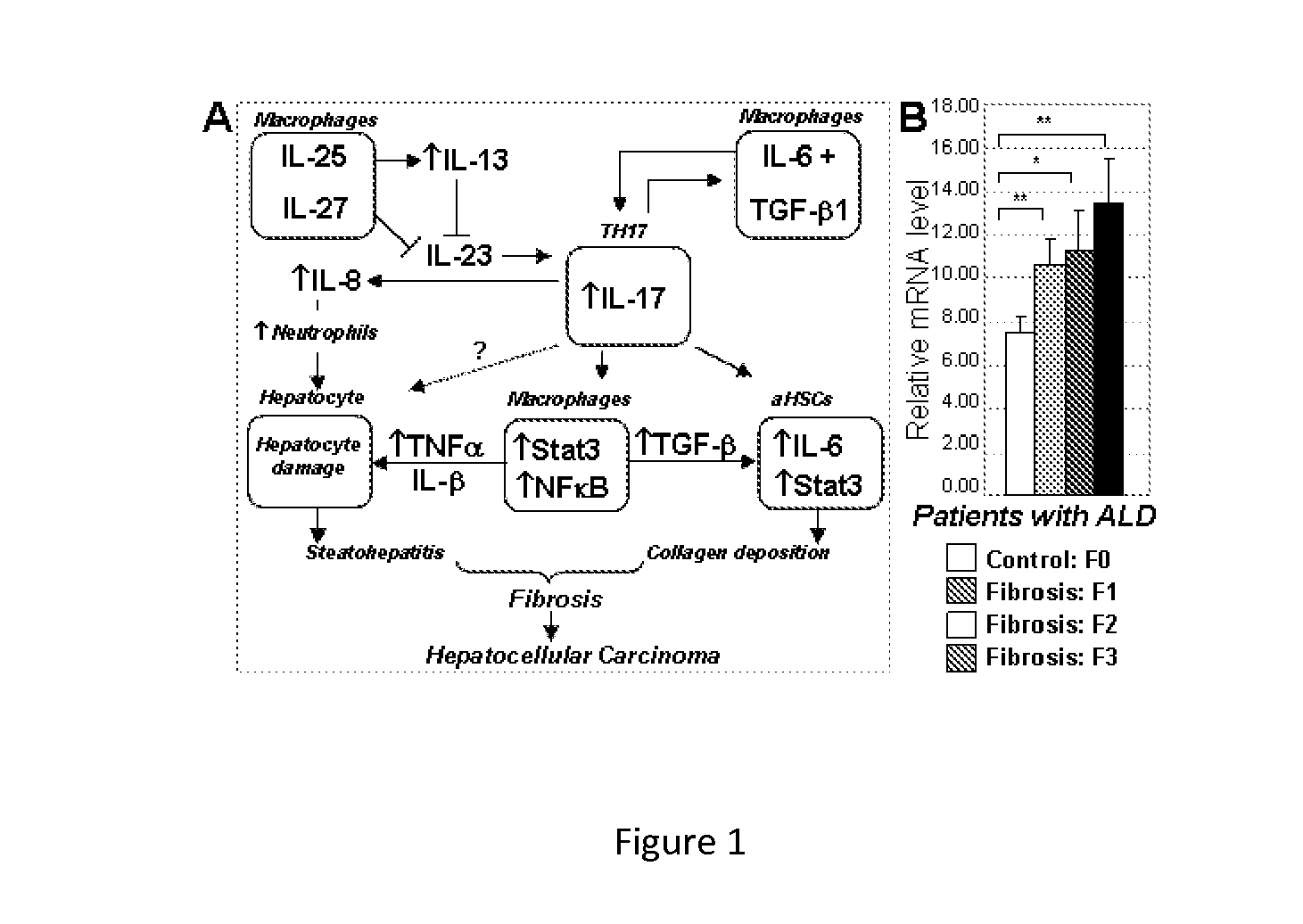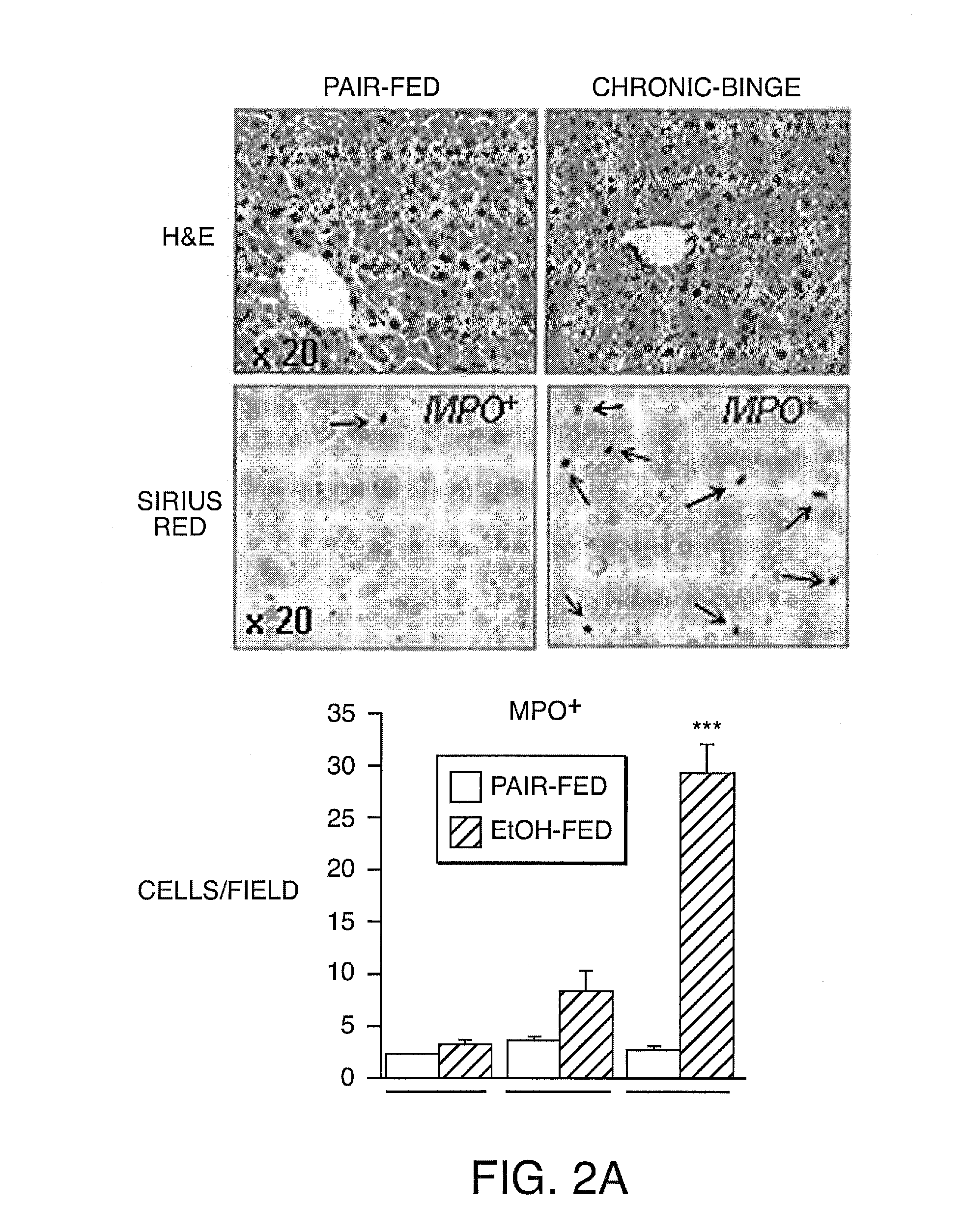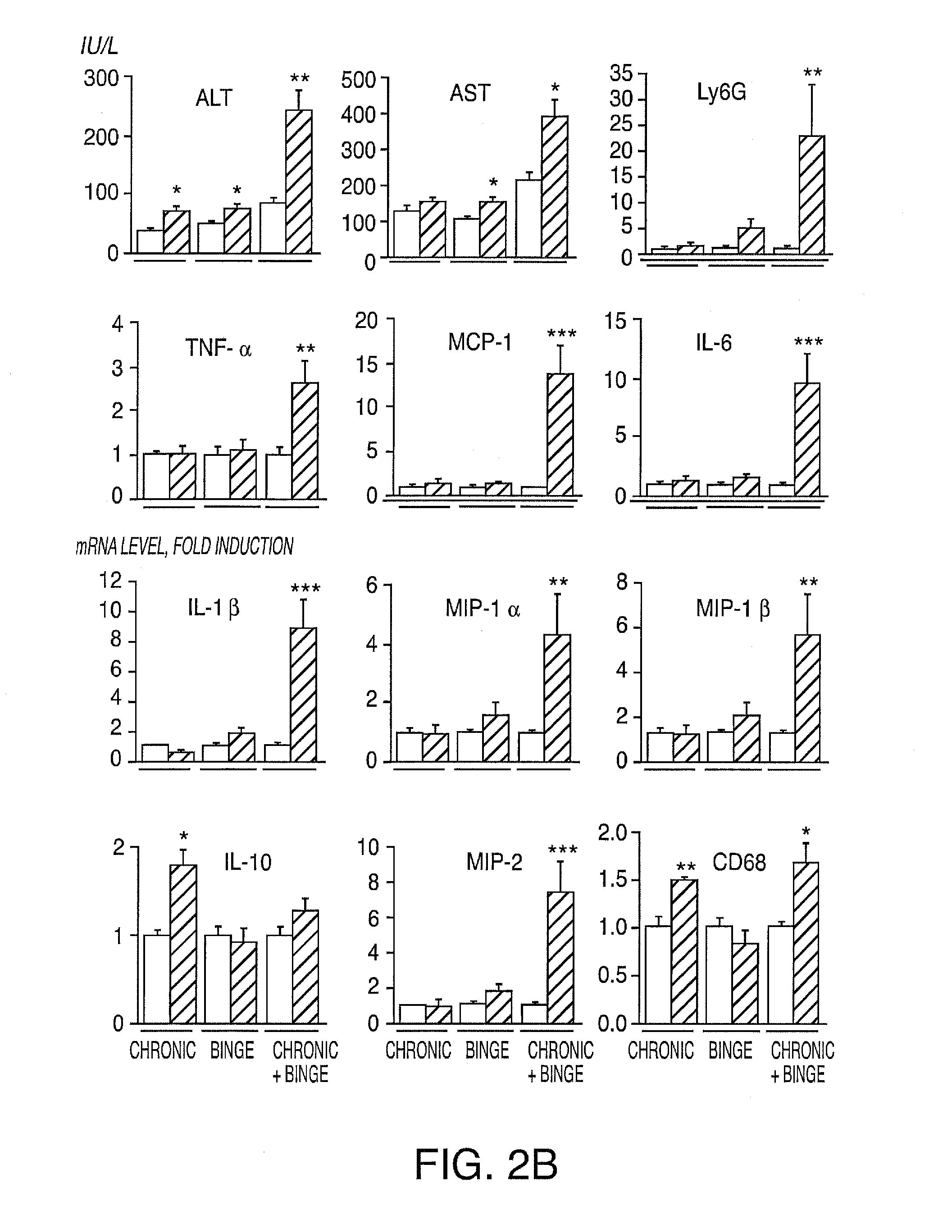Compositions And Methods For Treating Steatohepatitis, Liver Fibrosis, and Hepatocellular Carcinoma (HCC)
a technology for hepatocellular carcinoma and fibrosis, which is applied in the field of compositions and methods for treating steatohepatitis, liver fibrosis, and hepatocellular carcinoma (hcc), can solve the problems of no optimal treatment for liver fibrosis or hcc, and achieve the effect of refinement of antibody performan
- Summary
- Abstract
- Description
- Claims
- Application Information
AI Technical Summary
Benefits of technology
Problems solved by technology
Method used
Image
Examples
example 1
Materials and Methods Used in Examples 2-14
[0106]Cell Lines and Mice:
[0107]LX-2 cell line12 and hTERT cell line13, Collagen α1(I)-GFP mice14 were previously described. C57BL / 6 mice (8 weeks old) and GFAP-Cre mice were purchased (Jackson Laboratories). We obtained IL-17RA− / − mice15, IL-17A− / − mice16, and STAT3f / f mice17, IL-22− / − mice and IL-23− / − mice (Genentech). All animal experiments were approved by the UCSD Institutional Animal Care and Use Committee.
[0108]Liver Injury:
[0109]Liver injury was induced in mice by intragastric gavage with CCl4 (1:4 dilution in corn oil, 200 μl×12 injections2) or by BDL (3 weeks)2.
[0110]Isolation of Hepatocytes and Non-Parenchymal Cell Fraction and Primary HSCs:
[0111]Livers are perfused using pronase / collagenase method. Singe-cell suspensions are centrifuged at 50g for 5 minutes to pellet the hepatocyte fraction. The remaining non-parenchymal cell fraction was collected. KC and EC were isolated by gradient centrifugation (15% Nycodenz) following by ...
example 2
Progression of Liver Fibrosis Correlates with Elevated Expression of IL-17
[0135]Expression of IL-17A and IL-17F and their cognate receptors IL-17RA and IL-17RC was examined in two models of liver fibrosis in mice: BDL and CCl4. We determined that mRNA levels of IL-17A, IL-17F, IL-17RA and IL-17RC in fibrotic livers were strongly upregulated independent of the etiology of fibrosis (FIG. 6A). Development of liver fibrosis was also associated high levels of circulating IL-17A (FIG. 6A). Moreover, increased expression of IL-17A was detected in livers from patients with liver fibrosis and cirrhosis of different etiology (vs patients with no fibrosis), and correlated with the severity of the disease (FIG. 12). We conclude that IL-17 signaling may contribute to the pathogenesis of liver fibrosis.
example 3
IL-17RA− / − Mice are Resistant to Liver Fibrosis
[0136]The role of IL-17 signaling in hepatic fibrosis was studied in IL-17RA− / − mice, subjected to BDL or CCl4 (FIG. 6B-D). BDL-induced liver fibrosis was inhibited in IL-17RA− / − mice, as demonstrated in IL-17RA− / − mice by a decrease of collagen deposition (4±1% positive area) and the number of α-SMA+ myofibroblasts (5±1.5%) compared to wild type mice (13±4% and 12±1%, respectively; FIG. 6B). The liver function was also improved in IL-17RA− / − mice (FIG. 6B). Reduced mRNA expression of fibrogenic genes (α-SMA, Col-α1(I), MMP3, TIMP1, TGF-β1 and TNF-α, FIG. 6C) in livers of BDL-operated IL-17RA− / − mice correlated with low levels of α-SMA protein (vs wild type mice; FIG. 6D). Similar results were obtained in CCl4-injured IL-17RA− / − mice (FIG. 6B-D), suggesting that ablation of IL-17 signaling significantly attenuates development of liver fibrosis of different etiologies in mice.
PUM
| Property | Measurement | Unit |
|---|---|---|
| real time quantitative PCR | aaaaa | aaaaa |
| fluorescent microscopy | aaaaa | aaaaa |
| body weight | aaaaa | aaaaa |
Abstract
Description
Claims
Application Information
 Login to View More
Login to View More - R&D
- Intellectual Property
- Life Sciences
- Materials
- Tech Scout
- Unparalleled Data Quality
- Higher Quality Content
- 60% Fewer Hallucinations
Browse by: Latest US Patents, China's latest patents, Technical Efficacy Thesaurus, Application Domain, Technology Topic, Popular Technical Reports.
© 2025 PatSnap. All rights reserved.Legal|Privacy policy|Modern Slavery Act Transparency Statement|Sitemap|About US| Contact US: help@patsnap.com



